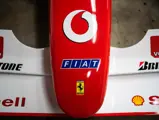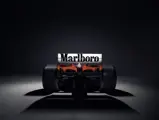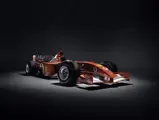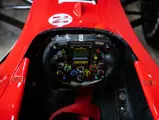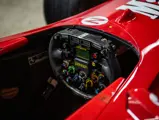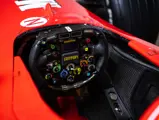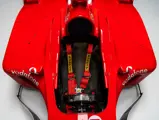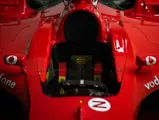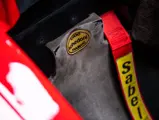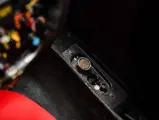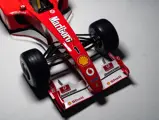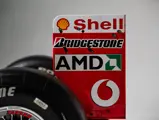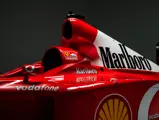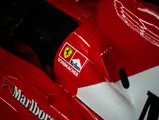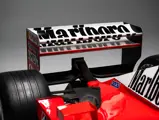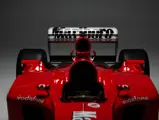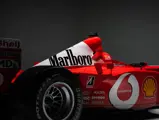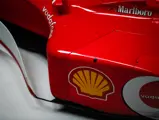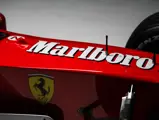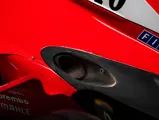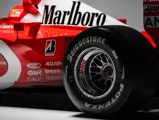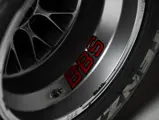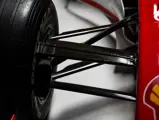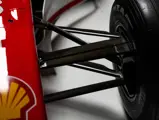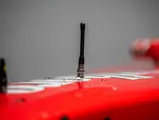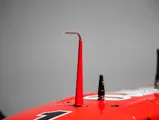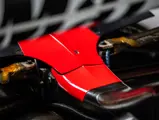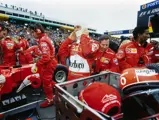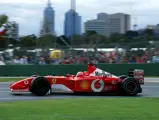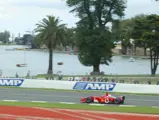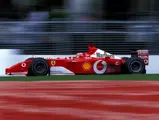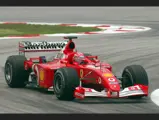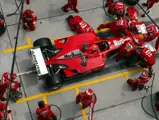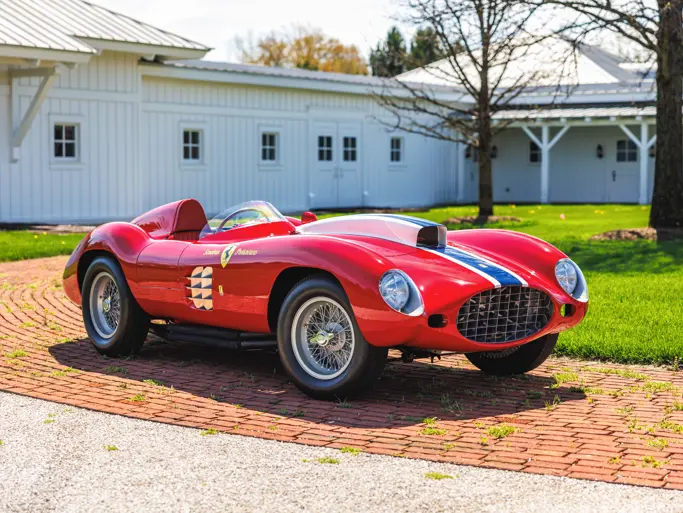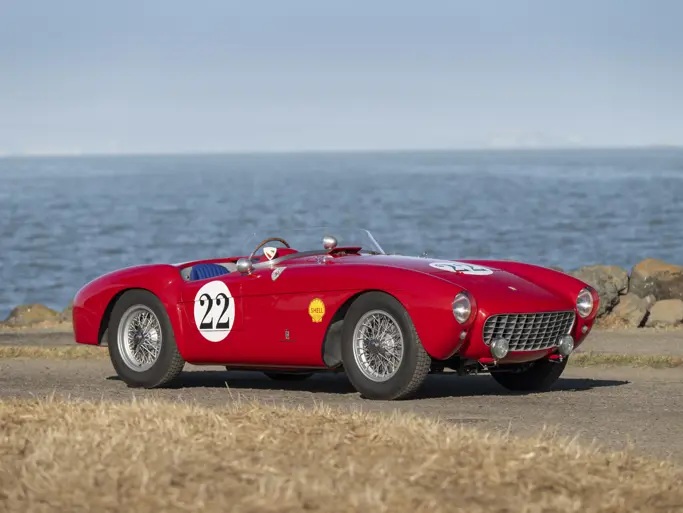Monterey 2024
2002 Ferrari F2001b Formula 1
{{lr.item.text}}
 | Monterey, California
| Monterey, California
{{internetCurrentBid}}
{{internetTimeLeft}}

- One of only approximately 12 World Championship-winning Ferrari chassis with at least one win and at least two podiums by Michael Schumacher
- One of only approximately 30 Ferrari Formula 1 chassis with a Michael Schumacher victory
- Achieved victory at the 2002 Australian Grand Prix and 3rd at the 2002 Malaysian Grand Prix; 100% record of podium finishes during its competition career
- Qualified in pole position for the Malaysian Grand Prix, scoring Ferrari’s milestone 150th Formula 1 pole position
- One of the most beautiful designs of modern Formula 1, a true sculptural masterpiece
- A pinnacle example of a car that defined an era; Michael Schumacher’s World Championship reign at Ferrari and the cars he drove to victory are positioned to become the most important automotive pieces of a generation
PODIUM PERFECTION
The 2002 Formula 1 season was hugely significant not only for ace driver Michael Schumacher, but also for Scuderia Ferrari. Utterly dominant from start to finish, Schumacher and his Ferrari team clinched the Drivers’ World Championship after just 11 races—almost three months before the conclusion of the season. Schumacher’s historic fifth Championship victory drew him level with the great Juan Manuel Fangio—a record that had stood since 1957—in addition to delivering Ferrari its fourth consecutive and 12th overall Constructors’ World Championship. Michael Schumacher was already a Formula 1 legend, but this incredible season catapulted his star to even further heights, ensuring his status as a global household name and securing his place as one of motorsports’ all-time greats.
This tour de force could not have been achieved without Schumacher’s prodigious talent—or the engineering brilliance of Ferrari F2001b chassis 215. One of approximately 30 Formula 1 chassis ever driven to victory by Schumacher, this pivotal car provided the springboard for one of the most incredible displays of supremacy in the Scuderia’s rich history.
Despite a thorough program of testing, the F2002 that was being prepared for the 2002 Formula 1 season initially presented a number of mechanical hurdles for Ferrari. Plagued by gearbox reliability issues, the team took the unusual decision to delay the introduction of that year’s new model and instead developed the outgoing F2001 model from the previous season. Not only had the F2001 proven to be incredibly reliable, it was also one of the most successful single-seaters to wear a Prancing Horse badge, having totally outclassed the competition with Schumacher winning nine out of 17 races on his way to a total of 123 points.
The new car—dubbed the F2001b—combined the best of the F2001 model, with its proven Gilles Simon-designed Tipo 050 V-10 engine and sequential electro-hydraulic seven-speed gearbox, with several innovations from the upcoming F2002. A new aerodynamic package increased downforce considerably, while the drivetrain featured several upgrades borrowed from the still-in-development Tipo 051 engine.
While Schumacher remained the favorite to capture a historic fifth title, the team’s expectations for the F2001b were more subdued, with Schumacher targeting a conservative points finish at the season opener in Melbourne. Hopes were raised during free practice, where the German ace posted the fastest lap in three successive sessions. He looked odds-on to repeat the trick in qualifying, were it not for a heavy rainstorm that effectively prevented any improvement at the halfway point of the session; in the end, Schumacher was pipped to pole position by his teammate Rubens Barrichello by just five-hundredths of a second.
The 2002 Australian Grand Prix took place on 3 March, proving a dramatic and somewhat chaotic start to the season. During an early challenge for the race lead, Schumacher’s brother, Ralf, collided under braking with the race leader, Barrichello, before going airborne, destroying the Ferrari’s rear wing and grazing the Brazilian’s helmet. Michael Schumacher managed to avoid trouble by taking to the grass, though eight cars were caught in the melee and the safety car stayed out until the end of the fifth lap. Schumacher managed to steal 3rd from great rival Juan Pablo Montoya shortly after, with the German taking the outright lead following a crash by Jarno Trulli on lap nine and a fumbled gearchange by David Coulthard two laps later. Spilled oil continued to cause problems for the field, and after dicing with Schumacher for several laps, Montoya began to drop off the pace. Schumacher maintained the lead for the final 39 laps, finishing more than 18 seconds ahead of his Colombian rival to seal a spectacular 54th career victory. Chassis 215 had not only proved its competitiveness, it catapulted Schumacher to the top of the Drivers’ World Championship standings with a haul of 10 points, delivering an early lead for Ferrari in the Constructors’ World Championship ahead of Williams-BMW.
Two weeks later, the Formula 1 circus decamped to the Sepang International Circuit for the 2002 Malaysian Grand Prix. For the second race weekend in a row, Ferrari opted to field F2001bs, with Schumacher once again piloting chassis 215. The pairing carried their winning pace into practice and qualifying, where Schumacher scored a spectacular pole position—his first of the 2002 campaign and the 150th in Ferrari’s Formula 1 history. Such was his superiority that only three drivers managed to get within a second of his fastest lap.
The race, which took place on 17 March, proved just as tumultuous as the season opener in Australia. Again, drama unfolded going into the first turn, where the three-way battle for supremacy between Schumacher, Montoya, and Barrichello resulted in Schumacher’s Ferrari coming into contact with the Williams, the German losing his front wing and edging Montoya off track. As a result of the accident, Schumacher was forced to pit, while Montoya was controversially issued a drive-through penalty—the first in Formula 1 history. At the sharp end of the race, both McLarens suffered engine problems and were forced to retire, while Barrichello ceded the lead to Ralf Schumacher on lap 35 following his second pit stop. The Brazilian looked certain to regain the lead when his Ferrari also suffered a mechanical failure, promoting Jenson Button to 2nd, chased by Montoya, Nick Heidfeld, and Michael Schumacher. Montoya eventually overcame Button to move into 2nd, sealing the first Williams 1-2 finish since the 1996 Portuguese Grand Prix, while the Briton was denied 3rd place in the dying moments of the race by none other than Michael Schumacher. Schumacher had battled from 21st place to put chassis 215 on the podium for the second consecutive race, in the process maintaining his lead in the Drivers’ Championship.
By late March, progress on the new F2002 was sufficient for the model to make its race debut, with Michael Schumacher being assigned chassis 220. Though chassis 215 made the journey to South America, its 3rd-place finish in Malaysia marked the end of its competition career; after returning from Brazil, it was used predominantly for tire testing. At the hands of Luciano Burti, chassis 215 completed five days of testing throughout April and May 2002, covering a cumulative total of 384 laps before being retired.
The car entered private hands the following year, having been acquired by a Swiss collector, who entered the car regularly in track events. The F2001b was acquired from him by the consigning owner in 2011. Prior to being taken on track, the car will need to return to Maranello for an engine, gearbox, and clutch refresh; an assessment of the car’s mechanical components is available to view on file.
CHASSIS 215: A MEMBER OF A VERY EXCLUSIVE CLUB
Ever since the dawn of automobiles becoming collectible items, competition cars have comprised the most desirable tier due to their rarity and special aura achieved through victory on the track. For the past several decades Formula 1 has been the undisputed leader in top level motorsport and has evolved into a global household sport—where legendary names such as Senna, Schumacher, and Hamilton will undoubtedly be remembered and recited for generations to come.
The groundbreaking technology developed from these high-performance marvels has fueled hundreds if not thousands of supercars, which have also reached top-level collectable status. It is the F1 cars, however, produced in extremely limited numbers of no more than six to 12 chassis each year, that have the potential to become the true kings of the collector car market in the future.
With only approximately 30 Michael Schumacher race-winning Ferraris in existence—a supply number very similar to the 250 GTO and 250 Testa Rossa production numbers of the 1950s and 1960s—these examples are among the most elite of all modern collector cars, with the population slimming down to just over a dozen examples if you are set on finding the very best from a World Championship-winning year. Further consider that the majority of these rarified Ferraris are locked away in long-term collections; each example to come to market represents an opportunity that no astute, forward-looking collector can afford to ignore.
With a victory at the 2002 Australian Grand Prix and a further 3rd place podium at Malaysia in 2002, this very car—chassis 215—helped propel Michael Schumacher to a then record-tying 5th World Championship, cementing the car’s legacy among the very best of all competition Ferraris to leave Maranello.





